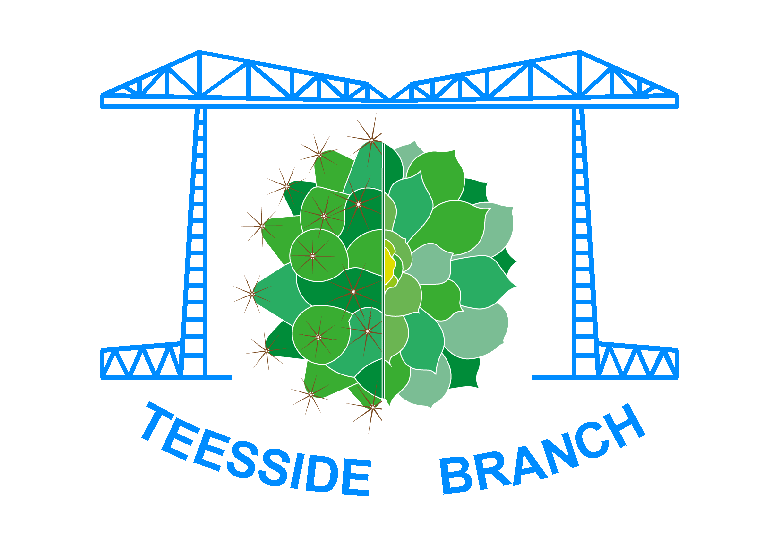PROBLEMS....
Many cacti and succulents are undemanding and easy to grow, but the effects of them.
Any plant that looks unwell, perhaps excessively soft or lacking its normal healthy sheen should be investigated promptly.
Delay could result in the loss of all or part of the plant, and could result in the problem becoming more widespread throughout the entire collection.
Most problems fall into three main categories : physical damage,pests and diseases
Physical Damage
There are many forms of physical damage, here are a few of the more common forms of damage that can disfigure plants:-
| |
|
|
Problem -Etiolation
Plants grown in poor light will suffer from thin and/or pale growth and weak spination.
Remedy
Ensure the plant gets sufficient light.
|
|
|
|
|
Problem -Root loss
The initial symptom for a plant that has lost its root is shrivelling due to a lack of water and nourishment.
Unfortunately exactly the same symptom can be the result of underwatering where the application of more water would solve the problem. This simple remedy would however have fatal consequences for a plant already without roots.
Remedy
Examine the plant to see if the compost is wet. Even if it is dry there could still be root damage and so it should be removed from the pot for a closer look. If it is found to have problems damaged roots should be be treated as a cutting.
|
Do you have a good quality picture of this problem? If so we would be interested in being given the opportunity to use it.
|
|
|
|
Problem -Scorch
Despite often coming from hot parts of the world, many succulent plants obtain shelter in their natural habitat by growing in the shade of rocks, trees, etc. Plants in cultivation that are subject to sunlight through glass can easily become scorched.
Remedy
Provide plenty of air movement and adequate ventilation.
|
|
|
|
|
Problem -Splitting
As cacti absorb moisture their bodies swell and become taut. This tension in the skin can result the plant literally tearing itself apart. Turbinicarpus and Lophophora are particularly prone to this problem.
Remedy
There is no cure, though eventually a split plant may shrug the damage down towards its base but it will certainly remain unsightly for a long time. The risk can be minimised by gradually increasing the amount of water given reduced quantities of water for the first couple after the plant's winter rest.
|
|
|
|
|
Problem -"Stopping" and "Die-Back"
Plants die back from their tips, or stop growing for a time eventually starting again leaving an unsightly "neck" around the plant body. Both these conditions usually result from too deep a dormancy. Die-back can also be the result of insufficient water during the growing season.
Remedy
Ensure plants are in good condition and growing well before they are given their winter rest. Keep plants growing evenly during the growing season.
|
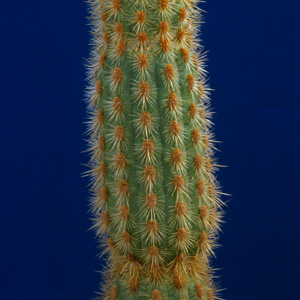
|
|
|
|
Problem -Handling damage
Mistreatment or rough handling will inevitably cause damage.
Remedy
Take care to avoid bruising or tearing plants when handling them. Avoid touching the surface of succulents that have a powdery farinose coating on the leaves as this is easily rubbed off.
When repotting cacti handle them gently to avoid pulling off spine clusters - particularly if wearing gloves, and if the plant has hook shaped spines.
|
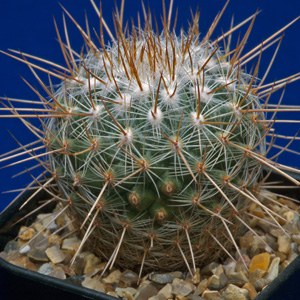
|
|
|
Pests
Eradicating pests is not always easy, it is better to try avoid problems by preventing pests getting established in the first place. This can be aided by applying the following to all newly acquired plants - before putting them near your collection:-
-
quarantine them for a couple of weeks
-
repot them into fresh compost
-
examine them closely for any signs of pests (both above and below the soil)
-
even if they appear clean, treat them with insecticide two or three times at weekly intervals
Such treatment will not prevent infestations, but it should reduce their frequency considerably. A further precaution is to give the entire collection an occasional application of insecticide.
Here are a few of the more common pests:-
| |
|
|
Problem -Mealy Bugs
These small, oval shaped pests grow to about 0.5cm (0.2") in length and are by far the most common insects to infest succulent collections. on the plants.
Remedy
Systemic insecticide. They can also be controlled - but not eradicated - by means of predatory insects. Small infestations can be treated by touching them individually with a paintbrush dipped in methylated spirits, but this is again unlikely to eradicate them completely.
|
|
|
|
|
Problem -Root Mealy Bugs
A similar pest to Mealy Bugs, Root Mealy Bugs attack the plant's root systems, often without being detected for some time.
Remedy
When repotting, examine the old pot for the white deposits left by this pest. If it is present, wash off the old soil and to soak the plant in a suitable insecticide before replanting it.
|
Do you have a good quality picture of this problem? If so we would be interested in being given the opportunity to use it.
|
|
|
|
Problem -Red Spider Mites
These tiny pests are mites, not true spiders and are barely visible to the naked eye. Their presence can be indicated by the fine webbing they cacti.
Remedy
Systemic insecticide.
|
|
|
|
|
Problem -Thrips
Thrips are more and more becoming a problem, most especially Western Flower Thrips. They can often be seen moving about on the petals of flowers. They damage and deformed flowers, and are also suspected of causing similar plant body damage to Red Spider Mite.
Remedy
Although unaffected by many chemical, an appropriate systemic insecticide is probably the only control.
|
Do you have a good quality picture of this problem? If so we would be interested in being given the opportunity to use it.
|
|
|
|
Problem -Sciarid Flies(alias Fungus Gnats or Mushroom Flies)
Usually discovered by the sight of tiny flies circling around infected pots. Although the flies themselves do no harm, their small, semi-transparent worm-like larvae, with black heads are a real danger to young seedlings. They can also attack mature plants.
Remedy
Sciarid flies thrive in composts containing a high proportion of peat, the use of a loam or mineral based compost can deter them. Some insecticides are ineffective, but a soil drench by an appropriate one can be eradicate them.
|
Do you have a good quality picture of this problem? If so we would be interested in being given the opportunity to use it.
|
|
|
|
Problem -Scale Insects
More a nuisance than a serious threat, these small, sap sucking pests clamp themselves onto the bodies of cacti. They exude a sticky substance which can encourage sooty mould.
Remedy
Systemic insecticide.
|
Do you have a good quality picture of this problem? If so we would be interested in being given the opportunity to use it.
|
|
|
|
Problem -Vine Weevils
Large cream coloured grubs with brown heads can occasionally be found in compost. These are the larvae of Vine Weevils which burrow into the body of plants from below the soil level and eat them hollow.
Remedy
Insecticide.
|
Do you have a good quality picture of this problem? If so we would be interested in being given the opportunity to use it.
|
|
|
Of course there are many other, more general, pests including slugs and
Diseases
Diseases tend to be less of a concern than pests, particularly if a good clean 'housekeeping' regime is adopted. Remove and dispose of dead plants or parts of plants, do not allow fallen leaves, or other detritus to accumulate and clean up spillages of compost. Add to this adequate ventilation and air movement and disease should not present a major problem.
The diseases most likely to be encountered are:-
| |
|
|
Problem -Rot
becoming infected.
Remedy
If discovered before it is too late it should be possible to save at least part of the plant. Cut out all of the soft, brownish, rot leaving only healthy tissue. Treat the remaining piece as a cutting. If any rot is not removed it will quickly become re-established and kill the rest of the plant.
|
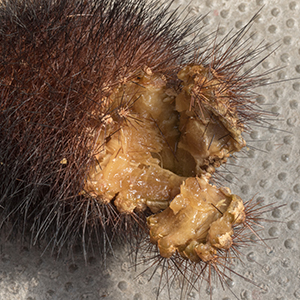
|
|
|
|
Problem -Rot (dry)
The plant slowly shrinks and dries out, going rubbery. There is often a bright orange-brown or pinkish discoloration of the inner tissues. A similar problem occurs with Stapeliads, but in this case it is black in colour.
Remedy
Treat the plant as described for rot (above).
|
Do you have a good quality picture of this problem? If so we would be interested in being given the opportunity to use it.
|
|
|
|
Problem -Sooty Mould
Some cacti, particularly those such as Ferocactus that secrete a sugary substance from their areoles, attract this dark coloured mould. It is unsightly and is not easy to remove.
Remedy
prevent the mould forming.
|
|
|
|
|
Problem -Botrytis
This grey fungal growth can form on plants especially if the collection is subject to cool and/or humid conditions. Otherwise it will usually only form on dead plants or vegetation.
Remedy
Removing dead flowers, seeds, leaves etc. can help prevent botrytis becoming established. Fungicide treatment can help eradicate it.
|
Do you have a good quality picture of this problem? If so we would be interested in being given the opportunity to use it.
|
|
|
 WARNING !
WARNING ! 
Insecticides & fungicides can kill !

Acknowledgement
Please feel free to print, copy and distribute these cultivation notes. We do ask however that the BCSS Teesside Branch is acknowledged as their source on any such copies.
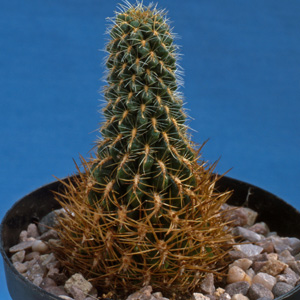
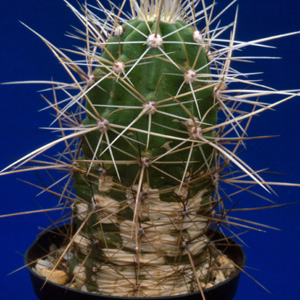
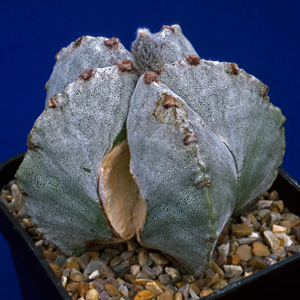


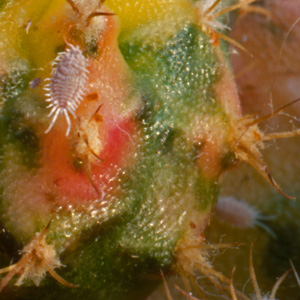
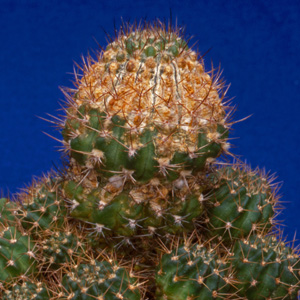

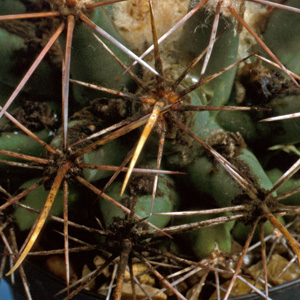
 WARNING !
WARNING ! 
